
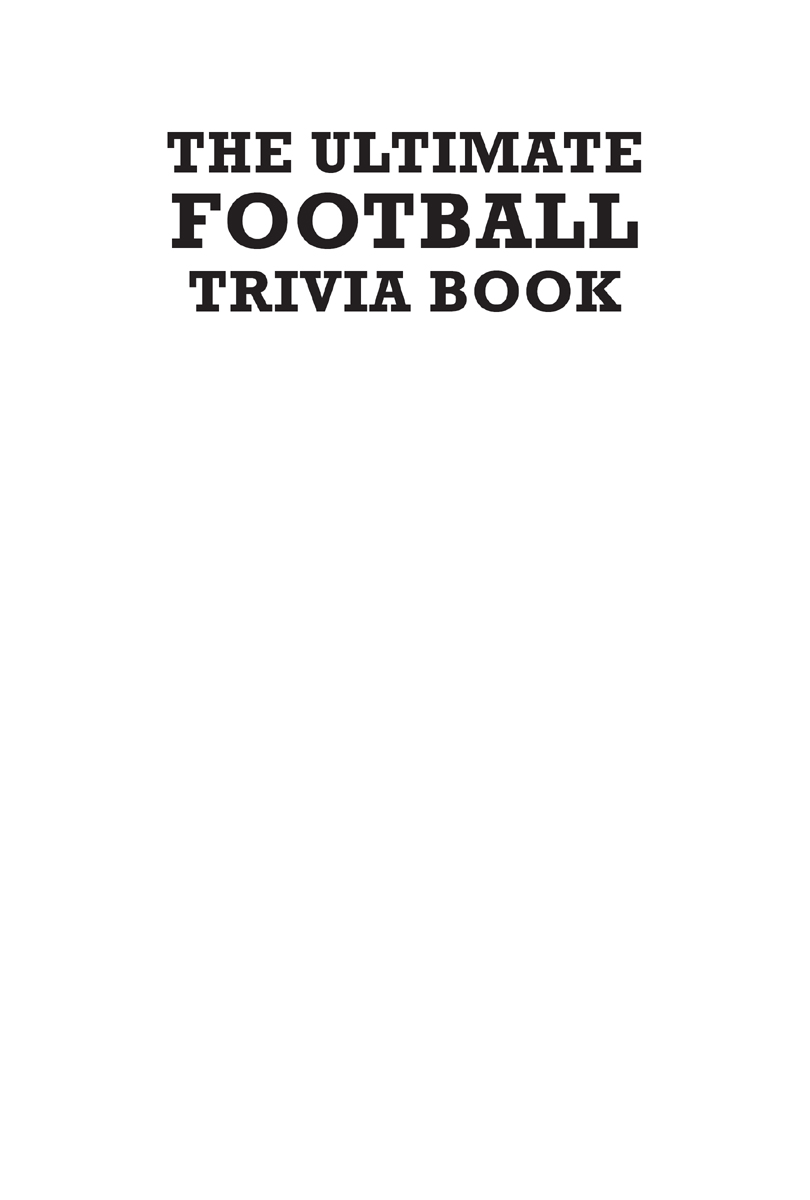
 Copyright 2019 by Christopher Price All rights reserved. No part of this book may be reproduced in any manner without the express written consent of the publisher, except in the case of brief excerpts in critical reviews or articles. All inquiries should be addressed to Sports Publishing, 307 West 36th Street, 11th Floor, New York, NY 10018. Sports Publishing books may be purchased in bulk at special discounts for sales promotion, corporate gifts, fund-raising, or educational purposes. Special editions can also be created to specifications. For details, contact the Special Sales Department, Sports Publishing, 307 West 36th Street, 11th Floor, New York, NY 10018 or .
Copyright 2019 by Christopher Price All rights reserved. No part of this book may be reproduced in any manner without the express written consent of the publisher, except in the case of brief excerpts in critical reviews or articles. All inquiries should be addressed to Sports Publishing, 307 West 36th Street, 11th Floor, New York, NY 10018. Sports Publishing books may be purchased in bulk at special discounts for sales promotion, corporate gifts, fund-raising, or educational purposes. Special editions can also be created to specifications. For details, contact the Special Sales Department, Sports Publishing, 307 West 36th Street, 11th Floor, New York, NY 10018 or .
Sports Publishing is a registered trademark of Skyhorse Publishing, Inc., a Delaware corporation. Visit our website at www.sportspubbooks.com. 10 9 8 7 6 5 4 3 2 1 Library of Congress Cataloging-in-Publication Data is available on file. Cover design by Tom Lau Cover photo credits: Getty Images Print ISBN: 978-1-68358-340-0 Ebook ISBN: 978-1-68358-341-7 Printed in the United States of America This one is for Mr. Meschonat, my eighth-grade English teacher. He was the first grownup outside of my own family to say, Hey, you know you could be a sportswriter.
Thanks for helping me reach the right path. Contents Acknowledgments The acknowledgments are always the most fun part of any book. No matter how solitary an endeavor book writing can be, it cant be done without the help of a lot of people, and this is my chance to thank all the people who helped make it a reality. First, as always, my thanks go out to super-agent Alec Shane, a guy who has helped jumpstart the second phase of my work as an author and always has my best interest at heart. Alec, you are the bestthank you for all that you do. Thanks to Julie Ganz at Skyhorse for helping this project see the light of day, and to Joseph Webb as fact-checker.
It was a pleasure and honor to be able to work with the both of you. Quite simply, I could not have completed this book without the gold mine that is Pro Football Reference. Their site is indispensable to me in my daily work, and it made the verification process for a project like this one that much easier. All of their reference sites are top notch. Go and visit them. Been blessed to have come across plenty of terrific colleagues here, most of whom are too numerous to mention, but they include great and good friends who have provided support and encouragement along the way.
Most have been thanked in previous editions, but I have to make sure I give a special shout-out to Stephen Popper and Georgia Churilla, two terrific friends. Stephen and Georgia, everyone . It takes a village to write a book, and this is the ideal chance to thank everyone who is part of our community. The Starbucks o Washington Street in Wellesley is a great place to write for many reasons, including the fact that they dont skimp on the espresso shots. Our neighbors are terrific, and community friends help provide an amazing support system. But ultimately, its all about family: Mom, Dad, Kelly, Jas, Molly, Marc, and Mina are as good a test audience as any author could ever hope for.
And finally, my everlasting appreciation and love go out to Kate, Noah, and our faithful cat Stretch. They work hard to make sure I have the best home-field advantage in the world. Introduction Growing up, I was a sports geek. I loved playing the games, sure. But when I saw my first real curveball when I was 11 years old or so, I realized my future was more in writing about sports than playing them. (I was more Ogilvie than Kelly Leak.) While I continued as an athletea growth spurt enabled me to play football and basketball later onmy love of writing fused with my love of sports.
So I devoured pretty much everything I could get my hands on, and did as much reading and writing as I could. I joined the school newspaper, and I usually had one of these four things with me at all times: anything written by Zander Hollander, the Baseball Encyclopedia , Sports Illustrated (shout-out to Grandma and Grandpa Dunn for saving the old ones for me), and the Boston Globe sports page. The upshot to all of it? Now, I get to live my dream. Ive been a sportswriter all my professional life. Its all I ever wanted to do. (My father was a minister, and in truth, I was always a little struck as to how similar our jobs were/are: We both have non-traditional vocations that dont fit into the 9-to-5 stereotype. (My father was a minister, and in truth, I was always a little struck as to how similar our jobs were/are: We both have non-traditional vocations that dont fit into the 9-to-5 stereotype.
We both work weekends, and the week always built to the big payoff. Every so often, we would have to try and soothe people in occasional times of travail. And we both engaged with people of deep faith and spoke to those who would look forward to salvation every Sunday.) We tried to make this the sort of trivia book thats accessible to any and all football fans. As a result, even if you cant tell if a football is blown up or stuffed, there are questions in here that youll still be able to figure out. And if youre a hardcore football fan, there are questions for you as well that will test your knowledge of the ultimate team sport. Along the way, I hope you guys have fun trying to figure it all out.
Anyway, this is a book for the kids who are growing up as sports geeks. Theres no Zander Hollander anymore, but for the youngsters like me who love sports and history and stats and writingand footballthis is for you. I hope you enjoy it. THE DRAFT QUESTIONS The first-ever NFL draft was held at the Ritz-Carlton in Philadelphia on February 8, 1936. (Prior to the inaugural draft, players were free to sign with any club.) With commissioner Bert Bell at the helm, it was a distinctly low-tech affair when compared to drafts of today. According to reports, there were 90 names written on a blackboard, and teams were basically told to let er rip .
There were no scouting departments at that time, so teams pulled together lists from various media reports, visits to area colleges, and word of mouth between coaches, players, and league execs. It wasnt a wild successin the end, just 24 of the 81 players drafted ended up signing with their new teams. (Four more ended up playing in 1937.) Among those not signing? First overall pick Jay Berwanger. But the draft started to pick up steam, and it became the established method for restocking a team. While it was still a ways away from becoming the annual three-day event it is today, it grew and evolved throughout the 1940s and 50s, eventually expanding from nine rounds to 20. Teams started scouting departments in the 1940s, and those franchises started gaining separation from the rest of the league, forcing other teams to further develop their operations.
One of the savviest owners in the early days was Wellington Mara of the Giants. Mara subscribed to several out-of-town papers and magazines in hopes of finding quality players, and the results could be seen on the field. After all, it wasnt a coincidence New York appeared in the NFL championship game eight times in 14 seasons (193347). The draft moved from city to city throughout the 40s and 50s before settling in New York City in the 1960s, where it soon became a battleground for the feud between the AFL and NFL. The rival leagues held separate drafts from 1960 through 1966, before holding joint drafts from 19671969 prior to the merger. Post-merger, it was reduced from 17 rounds to a 12-round affair.
Next page
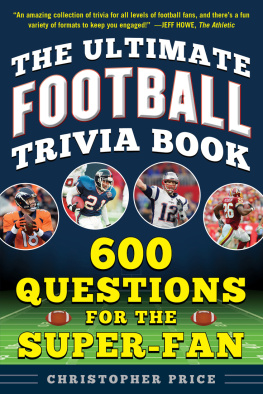

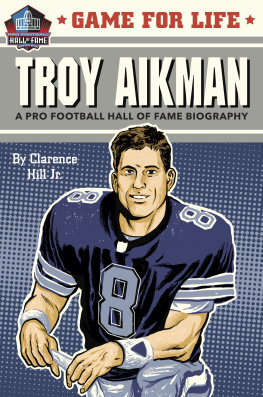
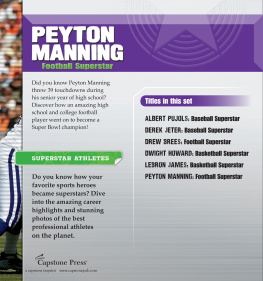
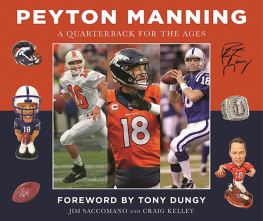

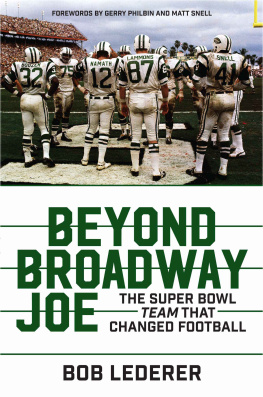

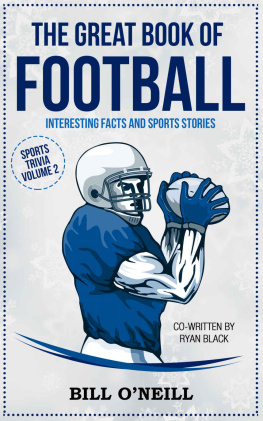


 Copyright 2019 by Christopher Price All rights reserved. No part of this book may be reproduced in any manner without the express written consent of the publisher, except in the case of brief excerpts in critical reviews or articles. All inquiries should be addressed to Sports Publishing, 307 West 36th Street, 11th Floor, New York, NY 10018. Sports Publishing books may be purchased in bulk at special discounts for sales promotion, corporate gifts, fund-raising, or educational purposes. Special editions can also be created to specifications. For details, contact the Special Sales Department, Sports Publishing, 307 West 36th Street, 11th Floor, New York, NY 10018 or .
Copyright 2019 by Christopher Price All rights reserved. No part of this book may be reproduced in any manner without the express written consent of the publisher, except in the case of brief excerpts in critical reviews or articles. All inquiries should be addressed to Sports Publishing, 307 West 36th Street, 11th Floor, New York, NY 10018. Sports Publishing books may be purchased in bulk at special discounts for sales promotion, corporate gifts, fund-raising, or educational purposes. Special editions can also be created to specifications. For details, contact the Special Sales Department, Sports Publishing, 307 West 36th Street, 11th Floor, New York, NY 10018 or .